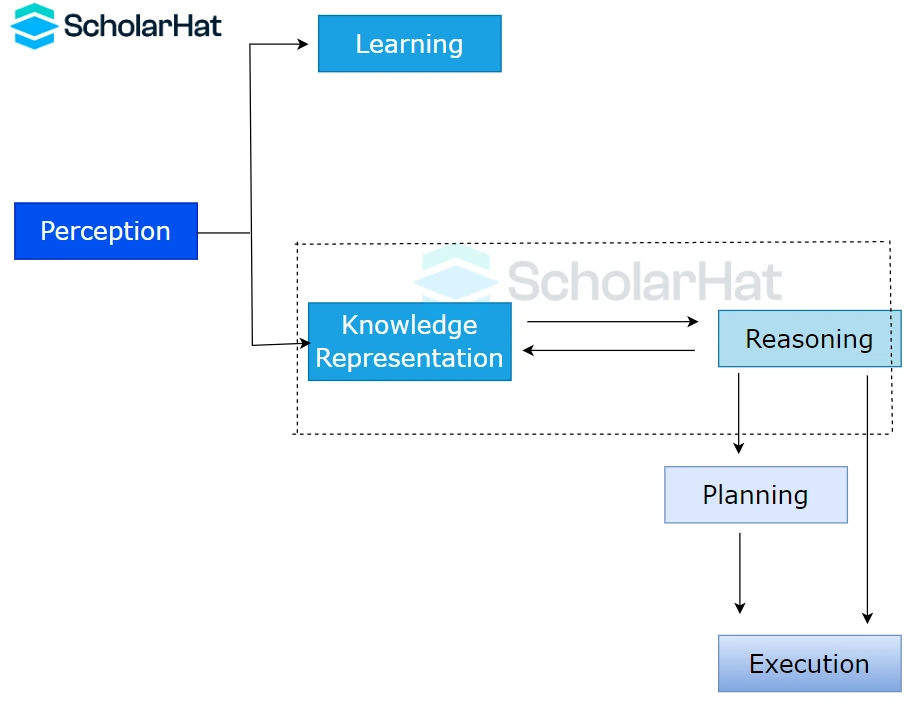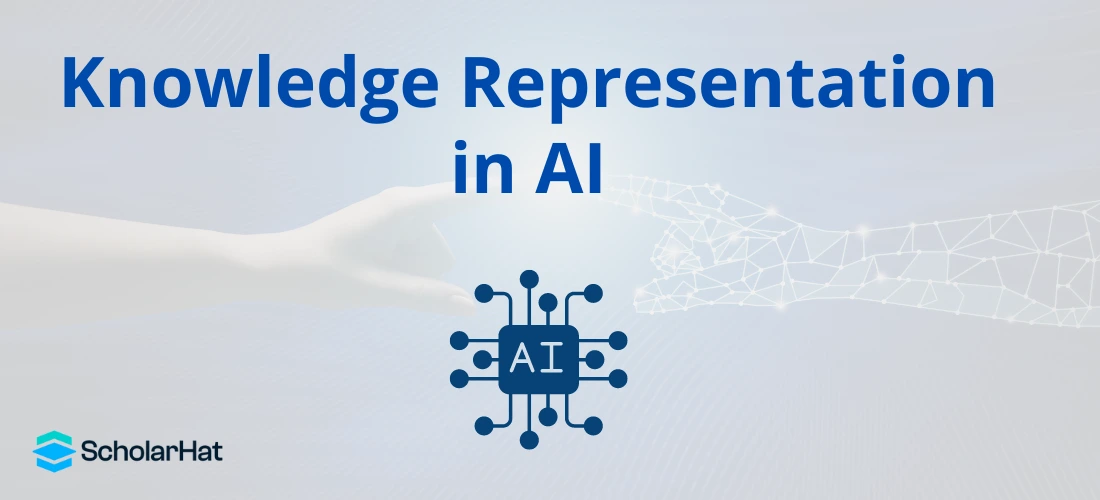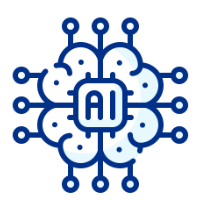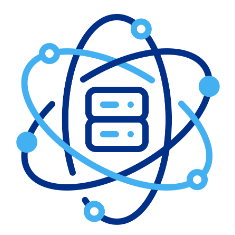18
AprKnowledge Representation in AI - Types, Issues, & Techniques
Knowledge Representation in AI - Overview
Artificial intelligence (AI) is based on the core idea of knowledge representation, which tries to capture and organize knowledge in a meaningful and structured fashion. It entails archiving data and making it available to AI systems so they may learn, reason, and make decisions based on knowledge. In this thorough book, Learn Artificial Intelligence, we will delve into the complexities of knowledge representation in AI, looking at its different forms, the knowledge cycle, approaches, strategies, benefits, drawbacks, practical applications, difficulties, and future directions.
What is Knowledge Representation in AI?
The process of encoding information in a way that an AI system can comprehend and use is known as knowledge representation in AI. It entails converting information and ideas from the real world into a form that computers can use, analyze, and make conclusions from. AI systems may imitate human cognitive functions including problem-solving, decision-making, and language comprehension thanks to this representation.
Types of Knowledge in AI
Knowledge in AI can be divided into various types of knowledge in AI, each of which serves a particular function in the process of knowledge representation as a whole.
1.) Declarative Knowledge
Declarative knowledge is the representation of information, facts, and claims about the outside world. Without outlining the method of knowledge acquisition or application, it concentrates on what is true or incorrect. Declarative knowledge is frequently modeled using logic-based formalisms and serves as the basis for other types of knowledge.
2.) Procedural Knowledge
Imperative knowledge, usually referred to as procedural knowledge, specifies how to carry out tasks or actions. It contains detailed guidelines, techniques, and rules that assist AI systems in carrying out particular tasks. AI systems need procedural knowledge to effectively complete complicated tasks and address issues.
3.) Meta Knowledge
Also known as knowledge about knowledge, meta-knowledge is the study of the composition, arrangement, and characteristics of knowledge. It aids AI systems in managing and making sense of their own information, allowing them to adjust, learn, and develop over time.
The Knowledge Cycle in AI
The continual process of obtaining, representing, reasoning, & updating knowledge within an AI system is referred to as the "knowledge cycle" in AI.

The following stages make up this process:
- Knowledge Acquisition: Information is gathered from a variety of sources, including databases, documents, experts, and even other AI systems. The goal of this stage is to gather pertinent knowledge and convert it into an appropriate representation format.
- Knowledge Representation: The key stage of the knowledge cycle is knowledge representation, where acquired information is organized and encoded in a language that AI systems can comprehend and use. The effectiveness and efficiency of knowledge processing are greatly influenced by the representation approach chosen.
- Knowledge Reasoning: During this phase, AI systems use the knowledge that has been encoded to carry out reasoning tasks like inference, deduction, or induction. AI systems can reason to create new knowledge from existing knowledge and to make defensible decisions based on the information at hand.
- Knowledge Update: The knowledge representation has to be updated when new information becomes available or as outdated knowledge is amended or rendered invalid. This phase guarantees that AI systems are current and flexible enough to respond to changing conditions.
Approaches to Knowledge Representation in AI
AI uses a variety of Approaches to knowledge representation, each with unique advantages and disadvantages. Several of the frequently used Approaches to knowledge representation include:
- Logic-Based Methods: Knowledge is represented using formal logic in logic-based techniques, such as propositional logic, first-order logic, or fuzzy logic. These methods enable exact and rigorous representation, allowing AI systems to carry out logical inference and reasoning.
- Semantic Networks: Semantic networks are ways to describe knowledge by connecting labeled edges (relationships) to nodes (concepts). With this method, knowledge graphs may be navigated and explored by AI systems and emphasize the connections between concepts.
- Frames or scripts: Frames and scripts capture the characteristics, traits, and behaviors of things or circumstances and convey knowledge as organized frames or templates. This method promotes reasoning based on common scenarios and makes it easier to convey complex knowledge.
- Ontologies: Ontologies define concepts, relationships, and limitations within a certain domain to offer a formal representation of knowledge. They give AI systems the ability to reason and infer using domain-specific information, improving accuracy and understanding of the context.
Techniques of Knowledge Representation in AI
There are other techniques of Knowledge Representation in addition to the different approaches.
- Rule-Based Systems: Using a set of rules, or production rules, rule-based systems express knowledge. AI systems may make judgments based on certain conditions thanks to these rules, which are made up of conditions and actions.
- Semantic Web Technologies: Semantic web technologies like the Resource Description Framework (RDF) and the Web Ontology Language (OWL) offer standardized formats for expressing and transferring knowledge on the web. These tools make it possible for AI systems to access and incorporate data from many sources.
- Neural Networks: Through the training process, neural networks, in particular deep learning models, can learn and implicitly represent knowledge. These models are excellent at identifying intricate patterns and connections in unstructured data, including speech, texts, and photographs.
- Statistical Models: Using probabilistic linkages and statistical inference, statistical models, such as Bayesian networks or Markov models, express knowledge. These models give AI systems the ability to reason and decide in the face of uncertainty.
Advantages and Limitations of Different Techniques of Knowledge Representation
Each method of knowledge representation has unique benefits and drawbacks that make it suitable for various AI applications. Several of the strategies discussed above have the following advantages and limitations:
Logic-Based Methods
Advantages
- Formal and accurate representation.
- Facilitates deduction and logical reasoning.
Limitations
- Difficulty dealing with uncertainty and insufficient data.
- limited scalability for huge knowledge sets.
Semantic networks
Advantages
- Emphasises linkages and interactions between concepts.
- Allows for flexible knowledge graph traversal.
Limitations
- Difficulties in modeling sophisticated knowledge structures.
- Absence of formal semantics and reasoning abilities.
Scripts and frames
Advantages
- Records specific characteristics and actions of things or circumstances.
- Backs up logic with common scenarios.
Limitations
- Demands the explicit description of all potential circumstances.
- Minimal generalization outside of established frames or scripts.
Ontologies
Advantages
- Supports reasoning & inference based on domain constraints.
- Offers a formal representation of knowledge relevant to a domain.
Limitations
- Ontology construction requires topic specialists.
- Maintaining and updating them as knowledge expands presents difficulties.
Real-World Applications of Knowledge Representation in AI
AI's knowledge representation is used in a variety of fields and industries.
Here are a few significant real-world examples:
- Expert Systems: To simulate human competence and offer wise decision support, expert systems in AI make use of knowledge representation techniques. They are commonly utilized in industries like engineering, finance, and medicine where expertise in a certain topic is essential.
- Natural Language Processing: The ability of AI systems to comprehend, decipher, and produce human language is made possible by knowledge representation, which is a key component of NLP applications. Applications for NLP include sentiment analysis, language translation, chatbots, and virtual assistants.
- Robotics and autonomous systems: Knowledge representation helps with perception, planning, & decision-making in these systems. It enables robots to comprehend their surroundings, gain knowledge from their past, and efficiently communicate with people.
- Recommender Systems: Recommender systems employ knowledge representation to model item features, comprehend user preferences, and generate tailored recommendations. They are widely utilized in content recommendation engines, music and video streaming platforms, and e-commerce.
Challenges and Future Directions in Knowledge Representation in AI
Several obstacles and potential directions still exist in knowledge representation, despite the substantial progress made in this area. Among the principal difficulties are:
- Scalability: Scalability becomes a significant difficulty as knowledge's volume and complexity rise. Large knowledge bases must be efficiently represented and processed using sophisticated methods and distributed computing concepts.
- Information that is Uncertain or Incomplete: AI systems frequently work with information that is uncertain or incomplete. A major research area is improving knowledge representation approaches to manage uncertainty and reason with inadequate data.
- Knowledge Fusion and Integration: Combining and integrating knowledge from various sources and modalities is a difficult task. The goal of future research is to create methods that make it possible for heterogeneous knowledge to be seamlessly integrated for better AI performance.
- Explainability & Interpretability: AI systems should be able to justify their decisions with explanations. Building trust, assuring ethical AI, and satisfying legal standards all depend on the development of clear and understandable knowledge representation approaches.
Best Practices of Knowledge Representation in AI
AI knowledge representation entails gathering and arranging data for computational use. Top practices consist of:
- Expressivity: Use a representation language that fully expresses the constraints, relationships, supporting concepts, and domain knowledge.
- Formality: Offer well-defined syntax and semantics for defensible inference and automated reasoning.
- Ontology: Create an ontology to specify domain concepts, entities, and relationships, creating consensus.
- Modularity: In order to facilitate maintenance, reuse, and scalability, break complex knowledge down into modules.
- Granularity: Represent knowledge at the proper level of detail to facilitate sound deliberation and judgment.
- Probabilistic reasoning and uncertainty: Bayesian networks and fuzzy logic are two tools for dealing with uncertainty.
- Logic and inference: Based on the knowledge type and problem domain, choose the best logical processes.
- Scalability: Create the system with the ability to efficiently manage vast knowledge bases, facilitating quick retrieval and inference.
- Integration with Learning: Include learning algorithms as well as fresh information gleaned from data.
- Evaluation and iteration: Based on input and performance indicators, continuously assess and improve the representation.
Resources for further learning and practice
Online tutorials and courses: Explore Additional Learning and Practice Resources with us at https://www.scholarhat.com/training/artificial-intelligence-certification-training. There are numerous online tutorials and courses available that specifically focus on Artificial Intelligence.
Summary
Artificial intelligence's foundation is knowledge representation, which enables AI systems to comprehend, reason, and arrive at defensible decisions. We examined all facets of knowledge representation in AI in this thorough guide, from its definition to its types, methodologies, strategies, benefits, drawbacks, applications, difficulties, and future directions. Unlocking the potential of knowledge representation will be essential for creating intelligent systems that can solve difficult issues and supplement human abilities as AI develops.







